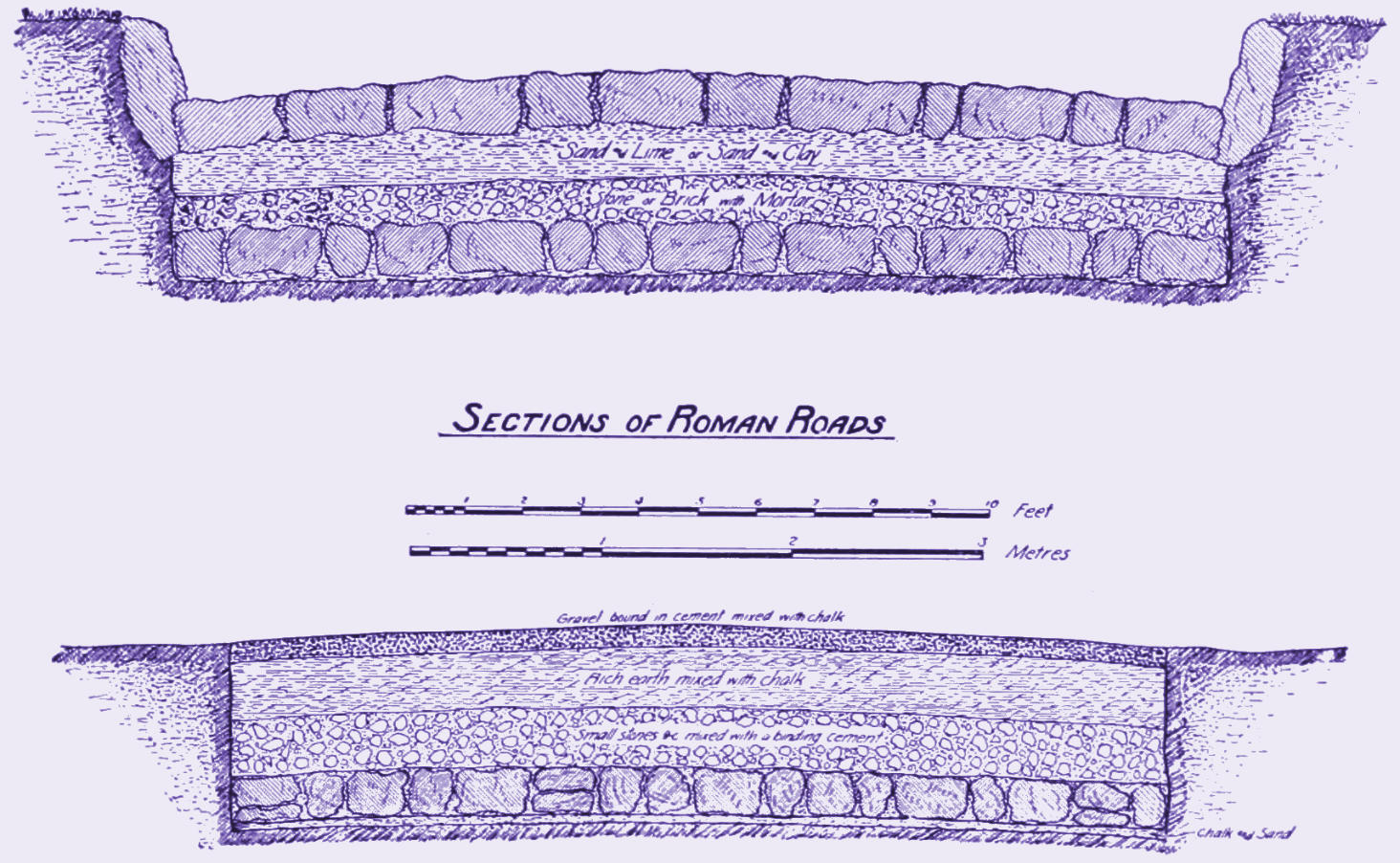The Timeless Legacy of Roman Roads: A Comparison to Modern Concrete Paver Bricks

The Roman Empire, renowned for its engineering marvels, left behind a legacy that continues to amaze us today – its intricate network of roads. These ancient thoroughfares, built over two millennia ago, have withstood the test of time and remain visible in parts of Europe and the Middle East. The longevity of Roman roads is a testament to the ingenuity of ancient engineering. Interestingly, modern construction has drawn inspiration from Roman roads, particularly through the use of concrete paver systems, which share some remarkable similarities.
Construction Techniques
Roman Roads:
Roman engineers utilized a combination of locally available materials, primarily stones, gravel, and sand, to construct their roads. The process began by excavating the roadbed to create a stable foundation. Layers of stones were then laid in a well-thought-out pattern, with the larger stones at the bottom and smaller ones on top. This design allowed for drainage and durability.
Modern Concrete Paver Bricks:
Modern construction has embraced the principles of adaptability and durability, which were key to the success of Roman roads. Concrete paver systems use interlocking bricks made from a mix of cement, sand, and aggregate materials. These pavers offer strength and stability while retaining the flexibility to adapt to different environments.
Load-Bearing Capacity
Roman Roads:
Roman roads were designed to accommodate heavy traffic and distribute weight effectively. The layered construction, with large stones at the base, ensured even weight distribution and reduced the risk of cracking or collapsing. This load-bearing capacity allowed Roman roads to endure for centuries.
Modern Concrete Paver Bricks:
Concrete paver systems, inspired by Roman road engineering, excel in load-bearing capacity. The interlocking design of the pavers allows for the distribution of weight, making them suitable for a wide range of applications, from driveways to pedestrian pathways, while minimizing the risk of structural issues.
Natural Drainage
Roman Roads:
One of the key reasons behind the longevity of Roman roads was their efficient drainage system. The sloped surface and well-placed drainage channels allowed rainwater to run off quickly, preventing water from seeping into the roadbed and causing erosion. This ingenious design helped Roman roads survive centuries of exposure to the elements.
Modern Concrete Paver Bricks:
The modern paver surface is largely impervious to water. Once the polymeric sand is in place, a concrete paver patio or driveway will shed about 95% of rainwater that falls on the surface. The concrete will absorb some moisture, and any water that passes through the pavers will be distributed by the compacted crushed stone base. This helps to keep the surface dry, minimizing the possibility of moisture induced movement in the summer and frost heaving in the winter.
Repair and Maintenance
Roman Roads:
Roman engineers designed their roads with the knowledge that maintenance would be necessary over time. Their layered construction allowed for relatively simple repairs. When a section of road became damaged, it could be excavated and repaired with new stones, ensuring the road's longevity.
Modern Concrete Paver Bricks:
Concrete paver systems offer ease of maintenance similar to Roman roads. When individual pavers become damaged or worn, they can be easily replaced without the need for extensive excavation. This cost-effective approach ensures the long-term sustainability of modern concrete paver systems.
Conclusion
The enduring legacy of Roman roads provides valuable insights into the longevity of ancient engineering marvels. Their construction techniques, load-bearing capacity, natural drainage, and ease of maintenance have inspired modern construction methods. Concrete paver systems, with their adaptability and durability, draw from the lessons of Roman roads while offering contemporary solutions for a wide range of applications.
At Earthworks Landscaping we walk in the tradition of the Roman roads. We appreciate the resilience of ancient engineering, we embrace the modern elegance of concrete paver systems that combine the best of tradition and innovation. Meanwhile, ongoing training through the ICPI (International Concrete Paver Institute) keeps us up to date on the latest construction techniques and engineering practices.



